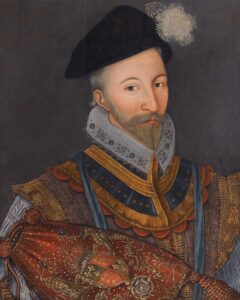 On this day in Tudor history, 12th January 1573, in the reign of Queen Elizabeth I, William Howard, 1st Baron Howard of Effingham, died at Hampton Court Palace. The diplomat, soldier and naval commander was buried at Reigate Church.
On this day in Tudor history, 12th January 1573, in the reign of Queen Elizabeth I, William Howard, 1st Baron Howard of Effingham, died at Hampton Court Palace. The diplomat, soldier and naval commander was buried at Reigate Church.
Howard was born in around 1510 and was the fourth son of Thomas Howard, 2nd Duke of Norfolk, and his second wife, Agnes Tilney, making him a half-brother of the powerful Thomas Howard, 3rd Duke of Norfolk, and the half-uncle of Queens Anne Boleyn and Catherine Howard.
He was educated at Cambridge before joining the royal court, beginning his career there as Anne Boleyn rose to power. In October 1532, he accompanied Henry VIII and Anne, who had just been raised to the peerage as Marquess of Pembroke, on their trip to France to gain King Francis I’s support for their union. Then, in 1533, following Anne’s marriage to the king, he filled in as Earl Marshal, for her coronation celebrations, the 3rd Duke of Norfolk being in France at the time.
Fortunately, he didn’t get caught up in Anne’s subsequent fall in 1536. However, he wasn’t so lucky with his other half-niece, Catherine Howard. In 1541, allegations were made about Catherine’s past-her relationships with her music teacher Henry Manox and a member of her step-grandmother’s household, Francis Dereham. Howard was in France on embassy at the time of the investigation, but was recalled to face a charge of misprision of treason for concealing Catherine’s “unlawful, carnal, voluptuous, and licentious life”. He was tried with his wife, Margaret, and other members of his family on 22nd December 1541. He pleaded “not guilty” at first, but then changed his plea to “guilty” after hearing all the evidence against him. He was found guilty and sentenced to “perpetual imprisonment, and forfeitures of goods and chattels”. Thankfully, following Catherine’s execution in February 1542, he was pardoned.
Trouble stirred for the Howards once more in late 1546, when the 3rd duke and Henry Howard, Earl of Surrey, were arrested, tried and sentenced to death. Surrey was executed but the 3rd duke was saved by the king’s death in January 1547, and Howard managed to avoid being implicated in their falls.
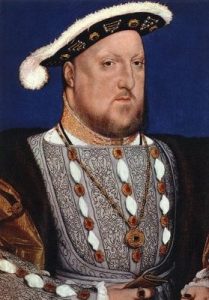 Howard wasn’t just a courtier, he was a diplomat, a soldier, and even served as Lord Admiral. In 1535, Henry VIII sent him to Scotland to present King James V with the Order of the Garter, and, in 1536, he went there again to organise a meeting between the Scottish and English kings, and to encourage him to break with Rome. While he was there, Howard got on very well with Margaret Tudor, the Dowager Queen. In 1535, Howard was also sent to France on an embassy with his half-brother, Norfolk, Sir William Fitzwilliam, and the Bishop of Ely, to negotiate with the Admiral of France, Philippe de Chabot, and then in 1539, he was one of those given the job of welcoming Henry VIII’s bride to be, Anne of Cleves, on her arrival in England.
Howard wasn’t just a courtier, he was a diplomat, a soldier, and even served as Lord Admiral. In 1535, Henry VIII sent him to Scotland to present King James V with the Order of the Garter, and, in 1536, he went there again to organise a meeting between the Scottish and English kings, and to encourage him to break with Rome. While he was there, Howard got on very well with Margaret Tudor, the Dowager Queen. In 1535, Howard was also sent to France on an embassy with his half-brother, Norfolk, Sir William Fitzwilliam, and the Bishop of Ely, to negotiate with the Admiral of France, Philippe de Chabot, and then in 1539, he was one of those given the job of welcoming Henry VIII’s bride to be, Anne of Cleves, on her arrival in England.
As for his military service, in 1544, Howard served in the king’s Scottish campaign, where he suffered a facial wound at the siege of Edinburgh, and in the king’s French campaign in the siege of Boulogne. A year later, he undertook his first naval service, and in 1546 was serving as vice-admiral under Lord Admiral John Dudley, Viscount Lisle. Unfortunately, his connection to the fallen Howards in 1547 prevented him from being appointed Lord Admiral, and Thomas Seymour was chosen instead. During the succession crisis of July 1553, even though he’d been an ally of John Dudley, Duke of Northumberland, who’d appointed him Lord Deputy and Governor of Calais, he held Calais in the name of Queen Mary, rather than Queen Jane. Following Mary’s accession, she rewarded Howard well. In January 1554, she chose him to welcome the Spanish ambassadors to London, and she also appointed him to her privy council.
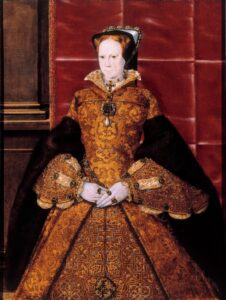 During Wyatt’s Rebellion in early 1554, Howard, along with the Earl of Pembroke and Lord Clinton, were in charge of raising the militia to defend London, and Howard held Ludgate against the rebels, stopping them from entering the city. On 11th March 1554, Howard was made Baron Howard of Effingham and on 20th March became Lord Admiral. That same year, he was also elected to the Order of the Garter. He lost royal favour slightly in early 1558, due to his support of the queen’s half-sister, Elizabeth, as her successor, and ended up losing his admiralty to Lord Clinton. However, the queen obviously still valued him as he was made Lord Chamberlain instead.
During Wyatt’s Rebellion in early 1554, Howard, along with the Earl of Pembroke and Lord Clinton, were in charge of raising the militia to defend London, and Howard held Ludgate against the rebels, stopping them from entering the city. On 11th March 1554, Howard was made Baron Howard of Effingham and on 20th March became Lord Admiral. That same year, he was also elected to the Order of the Garter. He lost royal favour slightly in early 1558, due to his support of the queen’s half-sister, Elizabeth, as her successor, and ended up losing his admiralty to Lord Clinton. However, the queen obviously still valued him as he was made Lord Chamberlain instead.
Howard’s career didn’t end with Mary I’s reign. He went on to serve Queen Elizabeth I as Lord Chamberlain and Privy Councillor, and played a role in negotiating peace treaties, such as the Treaty of Cateau Cambrésis. By 1572, Howard was suffering from ill health, and his position of Lord Chamberlain was given to his nephew, Thomas Radcliffe, Earl of Sussex, and Howard was made Lord Privy Seal instead. He died on this day in 1573 and his son, Charles, succeeded him as 2nd Baron Howard of Effingham.
William Howard’s story is one of survival, loyalty, and adaptability. In a time when many of his family members lost their heads, Howard managed to navigate the ever-changing political landscape of Tudor England. He served four monarchs, held key positions of power, and even managed to work his way back into royal favour after falling from grace and facing imprisonment. His life reminds us that, in Tudor England, survival wasn’t just about luck—it was about knowing when to adapt, when to stay loyal, and when to keep your head down.

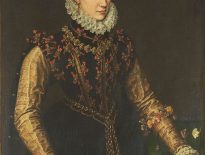
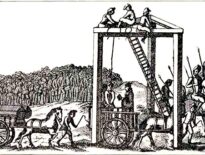
Leave a Reply